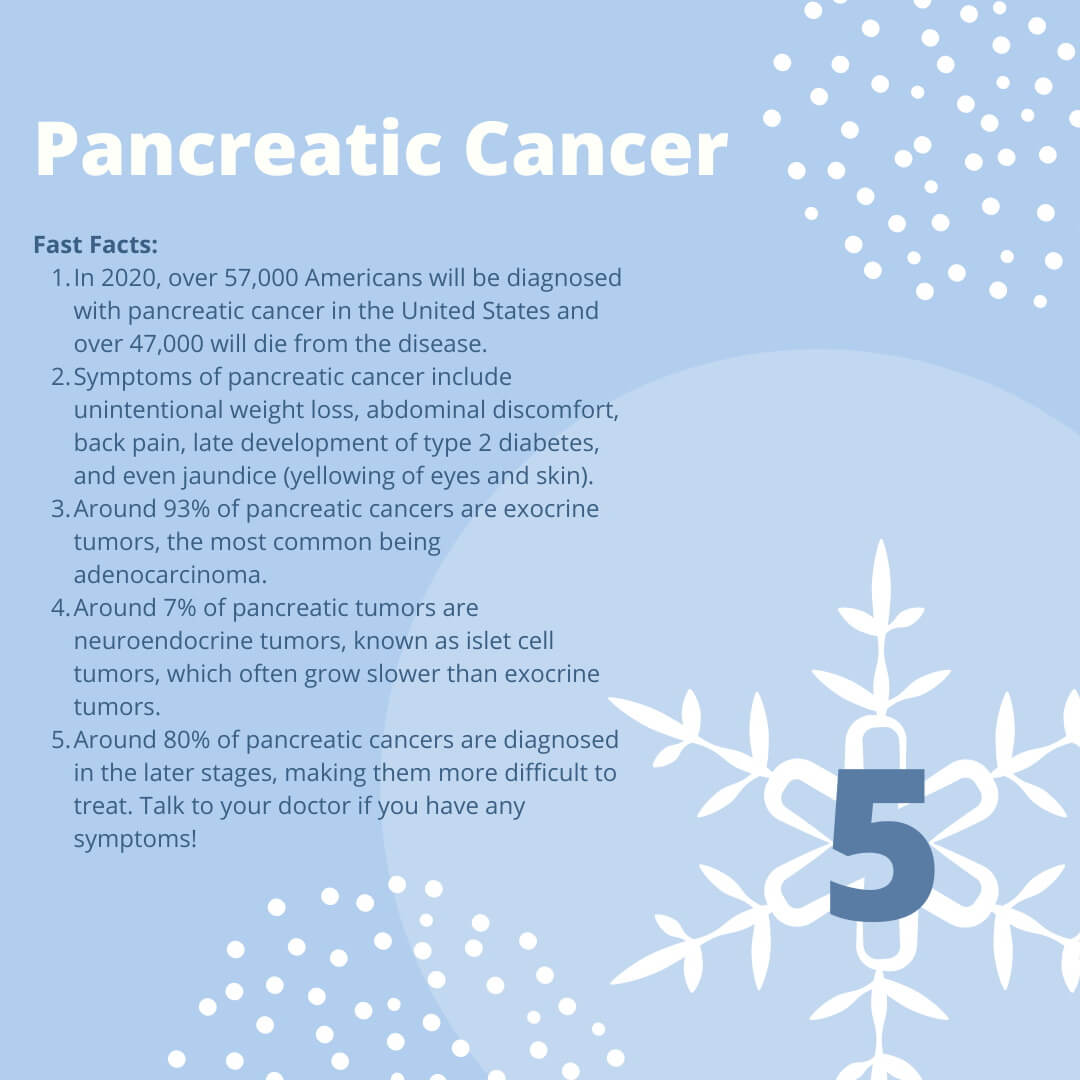
- In 2020, over 57,000 Americans will be diagnosed with pancreatic cancer in the United States and over 47,000 will die from the disease.
- Symptoms of pancreatic cancer include unintentional weight loss, abdominal discomfort, back pain, late development of type 2 diabetes, and even jaundice (yellowing of eyes and skin).
- Around 93% of pancreatic cancers are exocrine tumors, the most common being adenocarcinoma.
- Around 7% of pancreatic tumors are neuroendocrine tumors, known as islet cell tumors, which often grow slower than exocrine tumors.
- Around 80% of pancreatic cancers are diagnosed in the later stages, making them more difficult to treat. Talk to your doctor if you have any symptoms!

- Quicker access to pancreatic imaging and regular pancreatic surveillance has increased early diagnoses by around 14%! In early stages, pancreatic cancer is easier to treat and has a better survival rate.
- There are over 500 pancreatic cancer clinical trials currently active in America! These trials will help find new treatments and better screening tools for pancreatic cancer.
- Surgery outcomes have been steadily improving! A recent study found an improvement of over 20% since 2007 in the 2 years survival rate of patients after a pancreatectomy (having all or part of the pancreas removed) with or without radiation and chemotherapy.
More Details: How is Pancreatic Cancer Diagnosed?
Free Matching to Cancer Clinical Trials
- Your match report contains a detailed list of cervical cancer clinical trials that you may be eligible to enroll in to receive unique and nonconventional treatment. Standard treatment is not the only option.
- A patient advocate will review your report with you to answer any questions or concerns you may have and assist with enrollment if you decide to move forward with a trial.
- There’s no need to travel to a clinical trial site until the enrollment process is complete.
Our number one priority is creating positive outcomes for cancer patients. Let us help you today.


Write a Comment